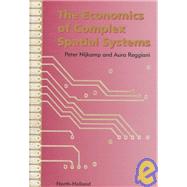| Preface | v | ||||
|
1 | (16) | |||
|
1 | (3) | |||
|
4 | (1) | |||
|
5 | (3) | |||
|
8 | (3) | |||
|
11 | (3) | |||
|
14 | (3) | |||
|
17 | (24) | |||
|
17 | (1) | |||
|
18 | (7) | |||
|
25 | (3) | |||
|
28 | (6) | |||
|
34 | (6) | |||
|
34 | (1) | |||
|
34 | (3) | |||
|
37 | (1) | |||
|
38 | (1) | |||
|
38 | (1) | |||
|
39 | (1) | |||
|
40 | (1) | |||
|
41 | (34) | |||
|
41 | (1) | |||
|
42 | (2) | |||
|
44 | (7) | |||
|
44 | (1) | |||
|
45 | (6) | |||
|
51 | (4) | |||
|
51 | (1) | |||
|
52 | (3) | |||
|
55 | (3) | |||
|
55 | (1) | |||
|
56 | (2) | |||
|
58 | (4) | |||
|
58 | (1) | |||
|
58 | (2) | |||
|
60 | (1) | |||
|
61 | (1) | |||
|
62 | (5) | |||
|
62 | (1) | |||
|
63 | (3) | |||
|
66 | (1) | |||
|
67 | (2) | |||
|
67 | (1) | |||
|
68 | (1) | |||
|
69 | (3) | |||
|
69 | (1) | |||
|
69 | (3) | |||
|
72 | (2) | |||
|
74 | (1) | |||
|
75 | (32) | |||
|
75 | (2) | |||
|
77 | (4) | |||
|
81 | (4) | |||
|
81 | (2) | |||
|
83 | (2) | |||
|
85 | (14) | |||
|
85 | (1) | |||
|
85 | (14) | |||
|
99 | (6) | |||
|
99 | (2) | |||
|
101 | (4) | |||
|
105 | (2) | |||
|
107 | (42) | |||
|
107 | (1) | |||
|
108 | (2) | |||
|
110 | (2) | |||
|
112 | (13) | |||
|
112 | (1) | |||
|
113 | (1) | |||
|
114 | (10) | |||
|
124 | (1) | |||
|
125 | (7) | |||
|
125 | (1) | |||
|
125 | (3) | |||
|
128 | (4) | |||
|
132 | (14) | |||
|
132 | (2) | |||
|
134 | (1) | |||
|
135 | (1) | |||
|
136 | (10) | |||
|
146 | (3) | |||
|
149 | (44) | |||
|
149 | (2) | |||
|
151 | (3) | |||
|
154 | (3) | |||
|
157 | (4) | |||
|
161 | (1) | |||
|
162 | (23) | |||
|
162 | (1) | |||
|
163 | (2) | |||
|
165 | (2) | |||
|
167 | (8) | |||
|
175 | (10) | |||
|
185 | (2) | |||
|
187 | (6) | |||
|
193 | (22) | |||
|
193 | (3) | |||
|
196 | (1) | |||
|
197 | (4) | |||
|
198 | (1) | |||
|
199 | (2) | |||
|
201 | (1) | |||
|
201 | (4) | |||
|
202 | (2) | |||
|
204 | (1) | |||
|
205 | (2) | |||
|
207 | (5) | |||
|
207 | (1) | |||
|
207 | (4) | |||
|
211 | (1) | |||
|
212 | (3) | |||
|
215 | (24) | |||
|
215 | (1) | |||
|
216 | (3) | |||
|
216 | (1) | |||
|
217 | (1) | |||
|
218 | (1) | |||
|
218 | (1) | |||
|
219 | (11) | |||
|
219 | (2) | |||
|
221 | (4) | |||
|
225 | (4) | |||
|
229 | (1) | |||
|
230 | (7) | |||
|
230 | (1) | |||
|
231 | (4) | |||
|
235 | (2) | |||
|
237 | (2) | |||
|
239 | (8) | |||
|
239 | (5) | |||
|
244 | (3) | |||
| References | 247 | (17) | |||
| Acknowledgements | 264 | (1) | |||
| Index | 265 |









